Waterproof absolute pressure sensors with absolute reference ranges for monitoring underwater pipe pressures or water depth/level in applications where it is not possible or less practical to provide a vented reference for atmospheric pressure compensation.
Waterproof absolute pressure sensors are specialized instruments meticulously engineered for precise pressure and level measurements within continuously submerged environments, particularly where compensating for atmospheric pressure via a traditional vented tube is impractical or inherently unreliable. Characterized by a hermetically sealed absolute pressure reference and a robust, corrosion-resistant, fully waterproof construction (typically IP68 or higher ratings), these sensors deliver stable and accurate readings essential for applications such as monitoring the integrity of underwater pipelines, determining water depth in deep boreholes and reservoirs (often by converting absolute to gauge pressure via atmospheric subtraction), and supporting advanced oceanographic research initiatives involving ROVs and AUVs, by directly measuring pressure unaffected by barometric changes or the significant risks associated with vent tubes in subsea conditions.
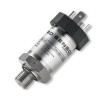 DMK457 Marine Approved Pressure Transmitter - Marine approved pressure transmitter with 4-20mA current loop output for shipbuilding with optional CuNiFe housing for sea-water compatibility
DMK457 Marine Approved Pressure Transmitter - Marine approved pressure transmitter with 4-20mA current loop output for shipbuilding with optional CuNiFe housing for sea-water compatibility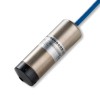 LMK458 Marine Approved Hydrostatic Level Transmitter - Marine approved level transmitter with 4-20mA output for measuring level of contents inside ship ballast, fuel, liquid cargo or wastewater tanks
LMK458 Marine Approved Hydrostatic Level Transmitter - Marine approved level transmitter with 4-20mA output for measuring level of contents inside ship ballast, fuel, liquid cargo or wastewater tanks SSPT Subsea Wet-Mateable Electrical Connector Pressure Sensor - This stainless steel ceramic sensing diaphragm based subsea connector pressure sensor provides a unamplified ratiometric millivolt output or an amplified analogue output signal corresponding to ranges from 0…1 bar (14.50 psi) up to 400 bar ( 5800 psi).
SSPT Subsea Wet-Mateable Electrical Connector Pressure Sensor - This stainless steel ceramic sensing diaphragm based subsea connector pressure sensor provides a unamplified ratiometric millivolt output or an amplified analogue output signal corresponding to ranges from 0…1 bar (14.50 psi) up to 400 bar ( 5800 psi).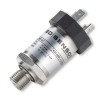 DMP457 Marine Approved Pressure Transmitter - Marine approved stainless steel diaphragm pressure transmitter with 4-20mA current loop output for shipbuilding in ranges from 100mb to 600 bar gauge or absolute.
DMP457 Marine Approved Pressure Transmitter - Marine approved stainless steel diaphragm pressure transmitter with 4-20mA current loop output for shipbuilding in ranges from 100mb to 600 bar gauge or absolute.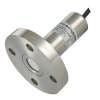 LMK457 Marine Approved Level Transmitter - Marine approved level transmitter with 4-20mA current loop output for shipbuilding with optional all CuNiFe construction for sea-water compatibility in ranges from 0.4 mH2O to 250mH2O gauge.
LMK457 Marine Approved Level Transmitter - Marine approved level transmitter with 4-20mA current loop output for shipbuilding with optional all CuNiFe construction for sea-water compatibility in ranges from 0.4 mH2O to 250mH2O gauge.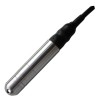 S12C SDI-12 Seawater Pressure & Temperature Transducer - SDI-12 protocol transducer for sensing water depth level and temperature in seawater, brackish water, tidal water, saline water or leachate.
S12C SDI-12 Seawater Pressure & Temperature Transducer - SDI-12 protocol transducer for sensing water depth level and temperature in seawater, brackish water, tidal water, saline water or leachate. S12S SDI-12 Coms IP68 Pressure and Temperature Sensor - Combined pressure and temperature sensor with a 1200 baud rate serial data interface as defined by the SDI-12 support group.
S12S SDI-12 Coms IP68 Pressure and Temperature Sensor - Combined pressure and temperature sensor with a 1200 baud rate serial data interface as defined by the SDI-12 support group.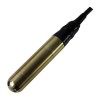 SWL Marine Bronze Submersible Level Sensor - Analogue output sensor for immersing in seawater to determine depth or change in water level by measuring hydrostatic pressure.
SWL Marine Bronze Submersible Level Sensor - Analogue output sensor for immersing in seawater to determine depth or change in water level by measuring hydrostatic pressure. IMCTL Submersible Liquid Level and Temperature Transmitter - IP68 combined liquid level and temperature, dual 4 to 20 milliamp output pressure sensor with a 316L or Marine Bronze housing.
IMCTL Submersible Liquid Level and Temperature Transmitter - IP68 combined liquid level and temperature, dual 4 to 20 milliamp output pressure sensor with a 316L or Marine Bronze housing. IMCL Submersible Absolute Reference Depth Sensor - Absolute reference hydrostatic depth sensor with an IP68 sealed electrical interface, SS316L, Duplex or PVC housing and a mV, voltage or current output.
IMCL Submersible Absolute Reference Depth Sensor - Absolute reference hydrostatic depth sensor with an IP68 sealed electrical interface, SS316L, Duplex or PVC housing and a mV, voltage or current output. IMCL Low Cost Submersible Pressure Sensor - Economical IP68 protected sensor with stainless steel 316L housing and Ceramic strain gauge sensing diaphragm for measuring liquid depth pressure.
IMCL Low Cost Submersible Pressure Sensor - Economical IP68 protected sensor with stainless steel 316L housing and Ceramic strain gauge sensing diaphragm for measuring liquid depth pressure. IMSL IP68 Stainless Steel 316L Hydrostatic Pressure Sensor - Water resistant pressure sensor for measuring hydrostatic pressures in the range of 0-0.5 mWC up to 0-100 mWC.
IMSL IP68 Stainless Steel 316L Hydrostatic Pressure Sensor - Water resistant pressure sensor for measuring hydrostatic pressures in the range of 0-0.5 mWC up to 0-100 mWC.
- BMS water tank 6mH2Og range 0-10V out submersible level sensor for commercial buildings
- SDI-12 interface, 2 bar absolute, submersible water level sensor
- Detecting water intake blockage on submerged reservoir intake screen using two sensors
- Non-vented submersible absolute range pressure and barometric sensor for measuring 10m water level
Find out more about Waterproof Absolute Pressure Sensors to determine which product options and capabilities will best meet your application requirements.
Waterproof absolute pressure sensors are specifically engineered for applications demanding dependable pressure measurement in fully submerged conditions, particularly where the use of a vented gauge sensor for atmospheric pressure compensation is either unfeasible or presents considerable practical difficulties. These specialized sensors integrate a hermetically sealed reference vacuum chamber adjacent to the non-wetted side of the sensing diaphragm. This crucial design feature ensures that all pressure readings are true absolute values, inherently immune to variations in ambient barometric pressure at the surface. Such a configuration is indispensable for accurate measurements in diverse underwater scenarios, including the precise monitoring of internal pressures within subsea pipelines or the accurate determination of water depth and levels in boreholes, reservoirs, and critical oceanographic deployments.
While these sensors inherently provide an absolute pressure reading, this data can be effectively utilized to determine gauge pressure, which is particularly crucial for precise depth or level measurements. This conversion involves the concurrent measurement of the local atmospheric (barometric) pressure at the surface, typically using a separate, non-submerged barometer. Within the connected data logging system, SCADA platform, or dedicated monitoring instrumentation, the prevailing atmospheric pressure value is then mathematically subtracted from the absolute pressure reading transmitted by the submerged sensor. The resulting value (Phydrostatic = Pabsolute_submerged − Patmospheric_surface) accurately represents the hydrostatic pressure exerted solely by the water column. This hydrostatic pressure is directly proportional to the water depth or level above the sensor, effectively providing a highly accurate gauge pressure measurement relative to the ambient surface pressure, essential for many water management and environmental monitoring applications.
The physical construction of these sensors prioritizes exceptionally robust waterproofing to rigorously prevent media ingress and guarantee sustained long-term operational integrity, even under challenging submersion conditions. This typically involves the selection of high-grade, corrosion-resistant housing materials such as 316L stainless steel, titanium, or specialized marine bronze, often complemented by durable O-ring seals or fully welded constructions to ensure a complete seal. The associated cable assemblies are a vital component of their underwater resilience, frequently featuring PVC (polyvinyl chloride), PUR (polyurethane), PE (polyethylene), or FEP (fluorinated ethylene propylene) sheathing. These are combined with specialized gland seals or integrally molded submersible connectors, meticulously designed to withstand continuous immersion and significant external water pressure without compromising electrical signal integrity or permitting water to wick into the sensitive sensor electronics. Ingress Protection (IP) ratings, such as IP68, are a standard benchmark, often further specifying the maximum permissible immersion depth and duration for which the sensor maintains its certified waterproof performance.
The inherent impracticality of employing vented (gauge) pressure sensors in numerous underwater applications arises from several critical factors. A vent tube that must extend from the submerged sensor to the surface is notably vulnerable to physical damage, potential blockage by sediment, debris, or biofouling, or kinking along its length, any of which can precipitate erroneous readings or complete sensor failure. Moreover, in contexts involving deep submersion or deployment on mobile underwater systems like Remotely Operated Vehicles (ROVs) or Autonomous Underwater Vehicles (AUVs), the management of an extended vent tube becomes logistically complex and can significantly impede the operational maneuverability of the host platform. Waterproof absolute pressure sensors effectively circumvent these pervasive issues by providing a self-contained, sealed, and inherently robust solution for direct and accurate pressure measurement precisely at the point of interest.
Key applications for these sensors directly leverage their distinct design advantages. For instance, in the critical task of monitoring the structural integrity and dynamic operational parameters of extensive underwater pipelines transporting oil, gas, or water, precise absolute pressure readings are vital for safety and efficiency. In hydrological and environmental monitoring programs, they are frequently deployed to measure hydrostatic pressure for the exact determination of water levels in groundwater wells, rivers, lakes, and coastal zones, aiding in flood monitoring, water resource management, and environmental assessment. Oceanographic instrumentation extensively integrates waterproof absolute pressure sensors for critical depth measurement in tide gauges, wave monitoring buoys, and onboard various underwater vehicles, where sustained accuracy and exceptional long-term stability are paramount for data quality. Their utility also extends to specialized fields such as aquaculture for managing water levels in submerged cultivation tanks, and diverse industrial applications including the monitoring of levels in submerged sections of wastewater treatment facilities or critical ballast tanks on marine vessels. The optimal selection of a specific sensor will invariably depend on the anticipated pressure range, which directly correlates to the depth of submersion, the chemical compatibility of the sensor’s wetted materials with the measurement media, and the required electrical output signal characteristics for seamless integration with existing data acquisition systems or SCADA platforms.
